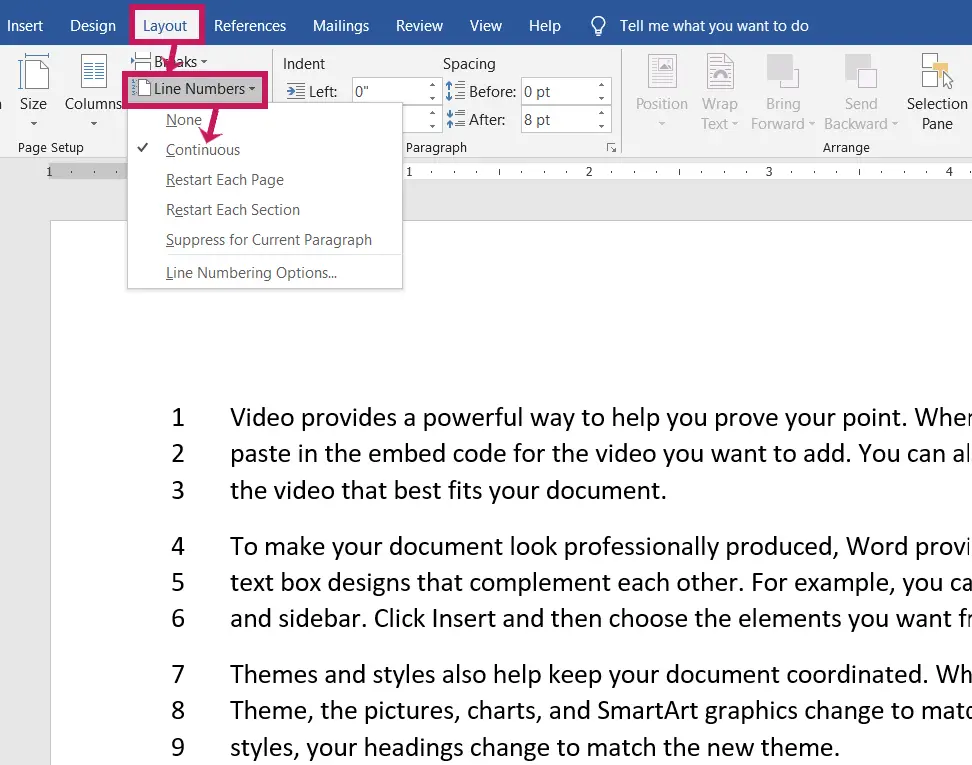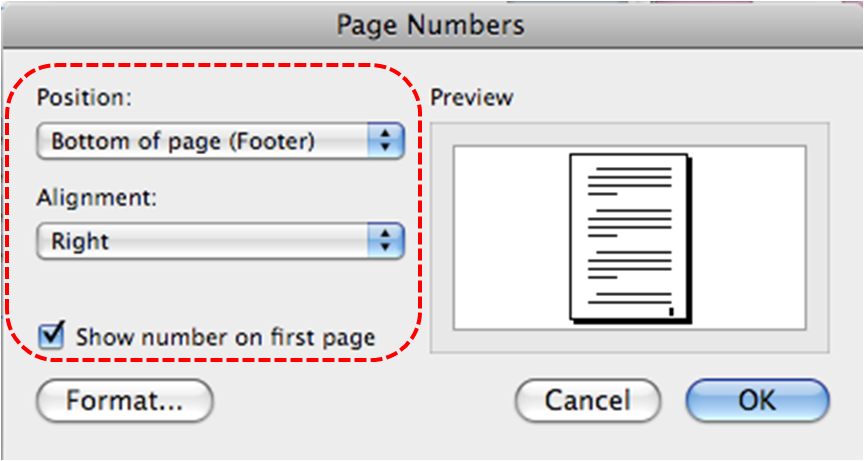

- #How to insert line numbers in word 2008 mac how to#
- #How to insert line numbers in word 2008 mac plus#
To change the number of heading levels displayed in the Document Map requires one more mouse movement than the old version.We lose 40% to 50% of the content compared with Word 2007 (the smaller your screen resolution, the bigger the hit). It's pretty, but because the headings are in little buttons, each one takes up a lot more space. It shows a lot less content than the old one.It displays paragraphs based solely on each paragraph's outline level.īut there are things I don't like so much about the new Document Map: Word no longer guesses about what to show in the Document Map.So I can open the new Document Map with the keyboard shortcut I've been using for a decade or more. The old pre-Word 2007 keyboard shortcut of Alt-V-D has been reinstated.

#How to insert line numbers in word 2008 mac plus#
#How to insert line numbers in word 2008 mac how to#
How to control the number of levels that Document Map displays In Figure 2, I can see that the cursor is within the section "Sea transport". As you move around your document, the Document Map will highlight the current heading.įor example, in Figure 1, I can see that the cursor is within the section with the heading "Balloons". You can see a page of text, but it's hard to know where you are in the document.ĭocument Map is a good way to solve this problem. If you have a really big document, it's sometimes easy to get "lost". How to use the Document Map to see where you are in a document That gives you a really fast way to navigate around your document. If you click on a heading in the Document Map, the cursor will jump to that heading. How to use the Document Map to move around your document quickly (And if you're used to using that, in Word 2007 and Word 2010, you can reinstate the Styles combobox to the Quick Access Toolbar.)įrom the Styles combo box, choose Heading 1 for your main headings, Heading 2 for sub-headings and Heading 3 for minor headings, and so on. In Word 2003 and earlier versions, the easiest way is probably to use the Styles combobox on the toolbar. In Word 2007 and Word 2010, on the Home tab, in the Styles gallery, click the thumbnail for the heading style you want to apply. There are many ways to apply the heading styles. To get Document Map to display useful headings, apply the built-in heading styles to the headings in your document. How to get Document Map to display something useful You get to choose whether to show just the highest-level headings, or lower-level headings as well. That is, it shows all the headings in your document. What it shows you, however, can be very useful. It just sits there on the left of your screen. Strictly speaking, it doesn't do anything. You'll see the Document Map on the left of your Word screen. (We lost the old keyboard shortcut in Word 2007, but it was reinstated for Word 2010!!) In all versions except Word 2007: Alt-V-D.The first is the Document Map (if you hover over it, the button says 'Browse the headings in your document'). Below the search box, there are three un-named pale buttons. In Word 2007 and earlier versions: View > Document Map.Figure 1: The three parts to the Navigation Pane in Word 2010


 0 kommentar(er)
0 kommentar(er)
